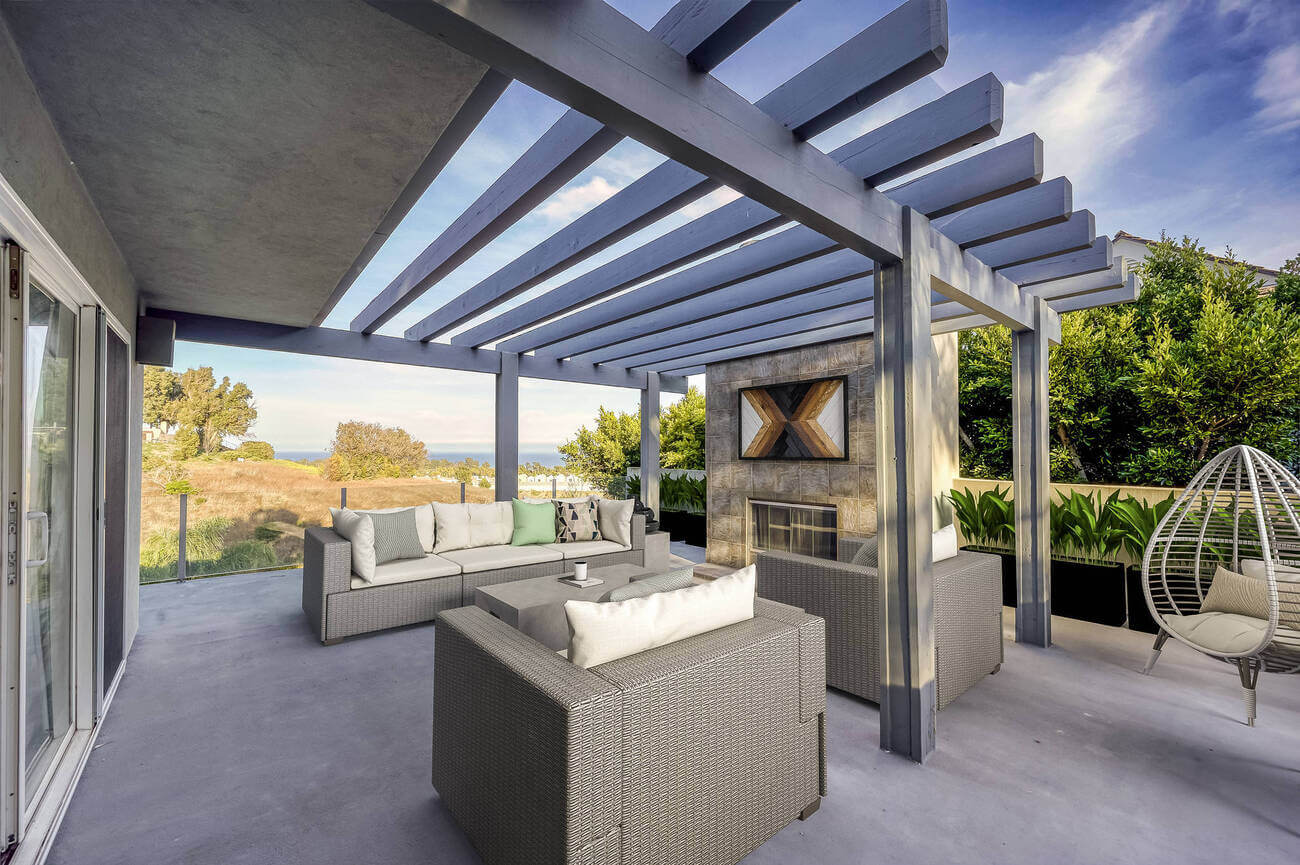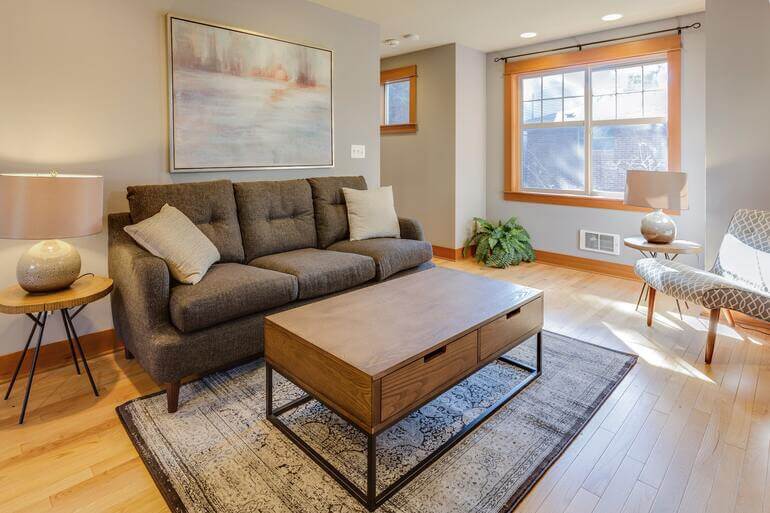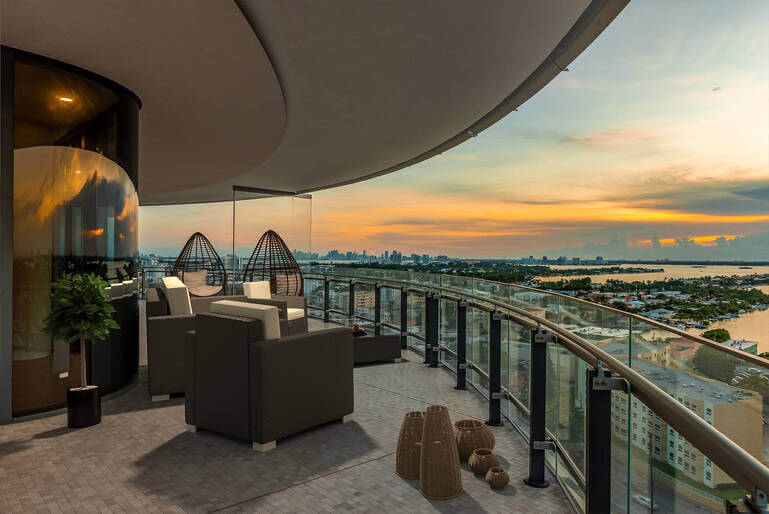Table of Contents
- The Concept of Virtual Staging
- Pros and Cons of Virtual Staging
- Pros and Cons of Traditional Home Staging
- Virtual Staging vs Traditional Home Staging
- Will Virtual Staging Replace Traditional Home Staging?
- Try PhotoUp’s Professional Virtual Staging Service!
Virtual staging has become increasingly popular in recent years, as technology has progressed and made it more photo-realistic. But with traditional home staging still being a widely used method for preparing homes for sale, one has to wonder—will virtual staging eventually replace traditional home staging?
In this post, we’ll take a look at virtual staging vs traditional home staging and the pros and cons of each approach to see which one comes out on top.
Let’s get started!
The Concept of Virtual Staging

Virtual staging is essentially a virtual version of home staging. It’s a technique usually used by real estate agents to make a house look more attractive and desirable.
Instead of actually staging the house with physical furniture and decorations, virtual staging takes photographs of an empty, outdated, or sparsely furnished property and digitally adds furniture, art pieces, and other decor.
This allows potential buyers to get a better idea of what their future space can look like. And they can imagine themselves living in the home.
Overall, virtual showings are becoming increasingly popular as they create an interactive experience that allows potential buyers to see the home’s full potential without ever needing to set foot in the property.
Hence why this technology to market real estate has exploded in COVID-10 times!
Pros and Cons of Virtual Staging


Virtual staging is a great way for sellers to maximize their potential and make their home look as inviting as possible.
Here are some pros of virtual staging:
- It’s cost-effective – Virtual staging is up to 97% cheaper than regular home staging.
- Easy to customize – It’s super easy to customize. And you can even stage a room using different interior design styles to cater to any market.
- No need to rent or buy new furniture – You don’t have to worry about finding furniture pieces or needing to hire home staging professionals to help stage your property.
- You can virtually stage any room in the home – It allows you to stage any room in the property. Whether you want to stage all rooms or just the most popular rooms such as the living room, bedroom, kitchen, and bathroom, it’s easily done in a few clicks.
- Saves sellers money on costly repairs – This powerful technology can even be used to perform digital repairs, redecorate and declutter outdated spaces or perform upgrades to the landscaping.
On the other hand, the cons of virtual staging are:
- Can look unrealistic – It doesn’t always look realistic and may appear cartoonish if the quality is bad or a virtual stager isn’t experienced enough. Often this is the case when using a DIY app.
- Can mislead buyers – Another con is that someone who isn’t familiar with what virtual staging actually looks like might not be able to tell the difference between a picture taken of an actual staged house and virtually stages images. This could be misleading to buyers.
To avoid this from happening, you should always disclose that your images are virtually staged. For more details, you can visit our blog post on is virtual staging legal? MLS-compliant virtual staging.
Pros and Cons of Traditional Home Staging

To compare, let’s now also look at the pros and cons of traditional home staging. The pros of traditional home staging are:
- Easily tailored – Traditional home staging can be tailored to a specific buyer or family. This allows them to see the property in its best light and truly envision themselves living there.
- Allows for more creativity – It provides an opportunity to showcase the home’s features in a way that virtual staging cannot. Professional stagers understand how to accentuate the selling points of any space, making the most out of what is available.
- Expected for luxury listings – If selling high-end homes, regular staging is expected to show potential buyers the home’s potential. And it also shows that you, as the seller or agent, are ready to walk the extra mile to sell the property.
Cons of regular staging:
- Cost a lot more! – On the other hand, traditional home staging is also more costly than virtual staging, as it requires buying furniture that may not be necessary. Renting furniture pieces can also be expensive. And depending on how long your property stays on the market, these costs will add up.
- Requires you to hire a professional stager – In addition to buying and hiring furniture, you’ll also have to pay for the actual stager to organize your home.
- Takes time! – Preparing a house for traditional home staging can take several days while virtual staging only takes minutes. So there are often time constraints when dealing with traditional methods.
- Can easily look overdone – Lastly, if too much furniture is used or it’s not arranged properly within a room, it can make a space feel cluttered and cramped, which could ultimately detract from its appeal.
Fast & Affordable
Virtual Staging Service
Interiors. Landscapes. Commercial. Virtually transform any space.
Virtual Staging vs Traditional Home Staging


Comparing virtual staging and traditional home staging can be tricky because they both have their advantages.
Traditional home staging is a great way to show off a property to potential buyers. But virtual staging has some major benefits as well.
Firstly, virtual staging allows for a furniture layout that’s tailored for the buyer, whereas traditional home staging often uses generic pieces of furniture.
This can give virtual staging an advantage if it’s done effectively, as it enables you to create virtual decor that targets the kind of people who might be interested in your property.
Additionally, virtual staging is more cost-effective than traditional home staging since you don’t need to buy or rent any furniture. It also offers greater flexibility since you can redecorate a space with just a few clicks.
All in all virtual staging vs traditional home staging comes down to preference. While both have their benefits, virtual staging can be especially helpful if you’re looking to cut costs while giving your property an effective overhaul.
The Potential Drawbacks
The images created by virtual staging are entirely digital, which means prospective buyers may not be able to accurately visualize the property’s true potential.
Additionally, virtually staged photos can misrepresent the size of certain parts of the property and make some areas appear bigger than they really are.
Over-selling a property in this manner can lead potential buyers to expectations that cannot be met once they have seen the actual space.
Lastly, virtual staging can create an unrealistic or impersonal atmosphere in a home, making it difficult for people to see themselves living in the space when viewing photos of the property online.
It’s, therefore, essential to use a professional service like PhotoUp to virtually stage your real estate photos. This will ensure the most photo-realistic images.
Will Virtual Staging Replace Traditional Home Staging?

The real estate market has seen a surge in the use of virtual staging for marketing properties, especially after the pandemic.
Naturally, many people are wondering if this new trend will eventually replace traditional home staging.
While virtual staging offers several advantages over traditional methods, such as cost savings and convenience, there are still some drawbacks that must be taken into consideration before completely replacing traditional home staging.
Ultimately, it is unlikely that virtual staging will ever fully replace traditional home staging.
Instead, we believe that the two methods may be used together to create the best results possible when selling a property.
Fast & Affordable
Virtual Staging Service
Interiors. Landscapes. Commercial. Virtually transform any space.
Try PhotoUp’s Professional Virtual Staging Service!


If you wish to see the stunning and photo-realistic results virtual staging can provide for yourself, you should consider trying PhotoUp’s virtual staging services.
Starting at the low cost of $20 to $30 per image, it helps you quickly transform any space into an inviting home that will appeal to those who are looking for their next dream home.
PhotoUp’s virtual staging services include:
- Virtual staging of vacant or furnished rooms
- Digital decluttering, repairs, and redecoration
- Color changes for walls, ceilings, and flooring
- And virtual landscaping
With 11 different design styles and hundreds of accessories, you can cater to any buyer or market. For example, our professional library offers the following design styles:
- Mid-Century Modern
- Scandinavian
- Coastal
- Farmhouse
- Modern
- American
- Industrial
- Hamptons
- Luxury
- Southwestern
- And Commercial


Some buyers may even place an offer sight unseen or pay a premium price for the property when being able to see and imagine the home’s full potential.
And unlike some other services, our virtual staging service is super easy to use.
PhotoUp’s user-friendly software allows you to upload your images, choose furniture sets, add instructions, and then access your high-resolution images in just a day or two.
PhotoUp Virtual Staging Demo
To see how easy it is to get started, check out our short virtual staging demo:
It’s really that easy! So, why wait?
Plus, PhotoUp does much more than just virtual staging. Their services also include:
- Real estate photo editing
- Single property websites
- Real estate photographer websites
- Property flyers
- Floor plans
- Video editing
- Virtual Assistants
- House portraits
- And more!
Sign up for a free PhotoUp account today, and let our professional CAD designers create stunning real estate images to help your listing stand out from the competition and sell for max value!
We hope this blog post helped you see the value of virtual staging as a more cost-effective and convenient option to traditional home staging. If you enjoyed this post, make sure to check out the following resources as well:






